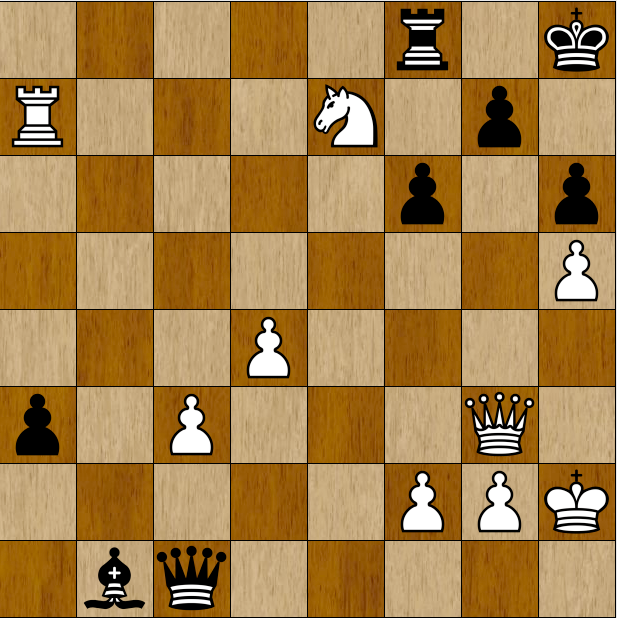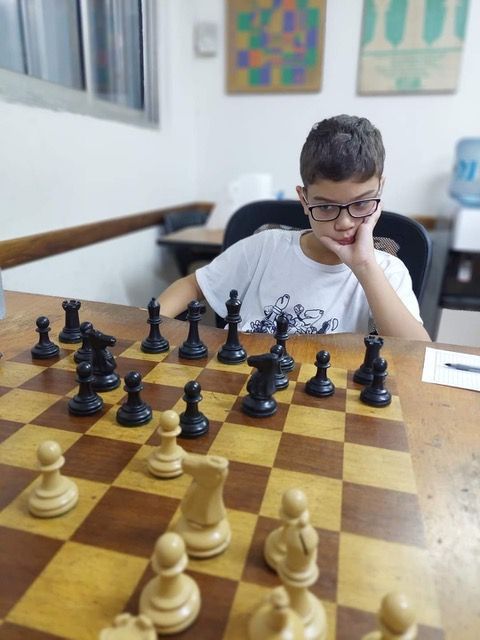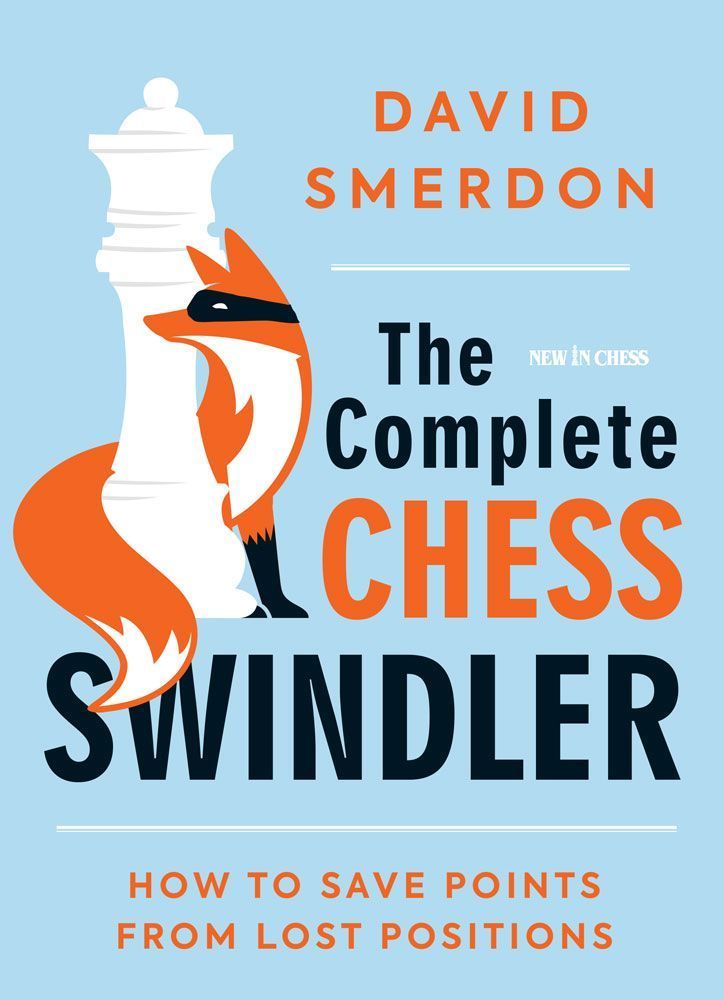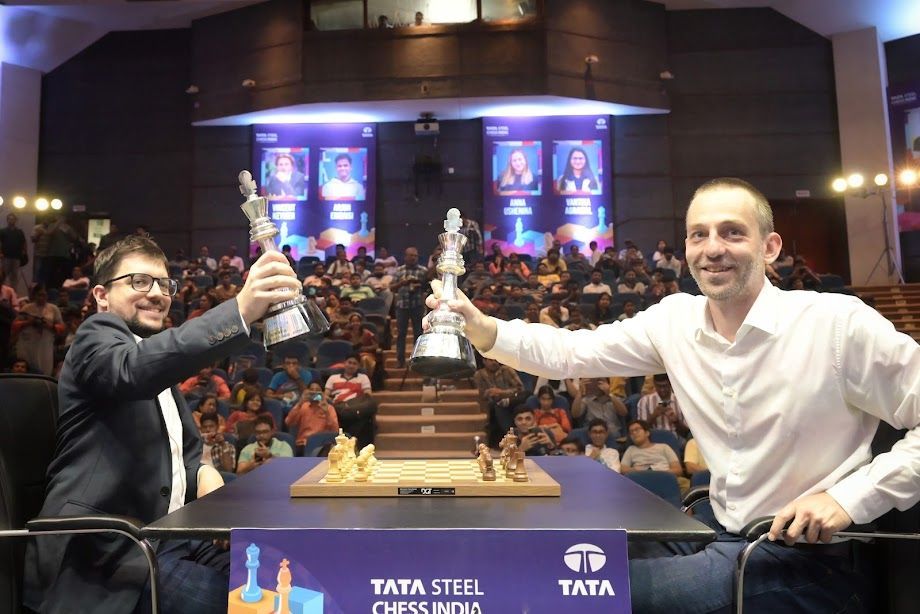London Calling
After a jittery start from Ding Liren, the €2m World Championship Match is now exploding into a humdinger of a street brawl as he trades blows, blunders and wins with Ian Nepomniachtchi, as the third successive decisive game in the contest sees both combatants vying for Magnus Carlsen’s abdicated title now tied at 3-3 in Astana, Kazakhstan.
Game. 5 proved to be a nice squeeze win in the Ruy Lopez for the Russian playing under the FIDE neutral flag - but this was a game where Ding didn’t do much wrong in it, and there was no shame or psychological scarring from losing. And to show it, Ding hit back immediately with a truly stunning win to tie the match-up again at 3-3 in the 14-game contest.

While Nepo bemoaned at the post-game presser that it “was one of my worst games ever”, an increasingly more confidant Ding said that he was “in very good shape during the game” and “not so much influenced by [Game 5] yesterday’s loss” and totally satisfied with what he showed on the board.
And with four decisive games now between Ding and Nepo in the first six games, the match also equals the explosive start to Karpov vs Kortchnoi (Merano 1981) from over 40 years ago! (And the legendary 1972 match between Spassky and Fischer, if you include the American’s defaulted Game 2). All eyes are now on Tuesday’s Game 7, where a fifth win would see Ding and Nepo join Botvinnik vs Smyslov (Moscow 1957) in the annals with the most wins (5) to the start of a World Championship match.
Coincidently, there was also a little bit of Word Championship legacy from over a century ago in Ding’s choice of openings in Game 6. The first ever game recorded in a London System was between those two great Victorian-era masters, James Mason and Joseph Henry Blackburne, naturally enough in London in 1883. But the tournament that was thought to have put the London System in the public eye was, in fact, its popularity during the 1922 London BCF Congress.
This elite tournament won by then World Champion José Raúl Capablanca - ahead of his potential challengers Alekhine, Rubinstein, Bogoljubow and Reti - was of great historical significance in the legacy of title matches during this pre-FIDE organised chess era, as it also affirmed the “London Rules” drawn up by the Cuban maestro for any future championship matches to challenge the World Champion.
Games 7 and 8 (of the scheduled 14) will be played on Tuesday and Thursday (with Wednesday being the midpoint stage of the match) and can be followed live on all the usual top platforms and on the official FIDE World Chess Championship site.
Ian Nepomniachtchi | 3
½ 1 ½ 0 1 0
½ 0 ½ 1 0 1
Ding Liren | 3
GM Ding Liren - GM Ian Nepomniachtchi
FIDE World Championship, (6)
London System
1.d4 Nf6 2.Nf3 d5 3.Bf4 The London System is the ideal opening for those who do not wish to get heavily involved in a sharp, theoretical duel, nor to explore reams of opening theory, but prefer to simply complete their development in a solid, non-confrontational way. But it wasn’t always known as the “London System”. It was often referred to as simply being a “Queens Pawn Opening”, and I believe it was only universally accepted in chess opening nomenclature as being the London System with the publication of Tim Harding's late 1970s Batsford book Colle, London and Blackmar-Diemar Systems. 3...c5 4.e3 Nc6 5.Nbd2 cxd4 6.exd4 Bf5 7.c3 e6 8.Bb5 Bd6 9.Bxd6 If only it were so simple that White could play 9.Ne5 - but Black more than quickly equalise after 9...Rc8 10.Qa4 O-O! 11.Bxc6 (Good for Black is 11.Nxc6 bxc6 12.Bxd6 Qxd6 13.Be2 Qf4! and White faces great difficulties.)11...bxc6 12.Bg3 Bxe5! 13.dxe5 (There's no time for 13.Bxe5? as Black quickly strikes with 13...Bd3! and White's king is caught in the middle of the board and unable to castle on either wing.) 13...Nd7 14.O-O Qc7 15.Nf3 c5 and Black has a free and easy game with no worries. 9...Qxd6 10.O-O O-O 11.Re1 h6 12.Ne5 Ne7 13.a4 a6 It looks innocuous, but all of Nepo's problems start to go wrong from here. From a lifetime of playing the London System set-up, allowing the big a4-a5 clamp with the backward b7-pawn can be very unpleasant for Black. But with careful play, despite the inaccuracy, it shouldn't give White very much to play with. 14.Bf1 Nd7? Nepo, using just two minutes on his clock, rushes into things and totally underestimates the idea of the a5 push from Ding. Worse is the fact that all the engines were showing this move to be a positional mistake and ranked #19 and bottom on their best-move list! 15.Nxd7 Qxd7 16.a5 Qc7 17.Qf3 Rfc8 18.Ra3 A useful little rook lift, as a future Rea1 may well be needed to protect the clamping a5-pawn. 18...Bg6 19.Nb3 Nc6 20.Qg3 Qe7 21.h4 Re8 22.Nc5 e5 23.Rb3 Nxa5 24.Rxe5 Qf6 25.Ra3 Nc4 26.Bxc4 dxc4 27.h5 Tricky, as allowing White to expand on the kingside can - and indeed is - dangerous. Black has to react in a dynamic way. 27...Bc2?! This isn't the losing move per se, but it just shows that Nepo has totally lost the plot with no understanding of the potential of Ding's position. Again he rushed into things, spending only three minutes on his clock - and it all starts to invariably slip through Nepo's fingers from here. Black has to be alert to all the tactical possibilities here, and Nepo, for some inexplicable reason, overlooked the more dynamic possibility of 27...Rxe5!? 28.Qxe5 If 28.dxe5 Qd8! 29.hxg6 and Black has a repetition with 29...Qd1+ 30.Kh2 Qh5+ 31.Kg1 There's no escaping the draw. If 31.Qh3? Qxe5+ 32.Kg1 Qxc5 33.gxf7+ Kf8 34.Qg4 Qc6 35.Ra1 Rd8 and Black will pick off the f7 pawn when he's ready with good endgame prospects. 31...Qd1+ 32.Kh2 Qh5+ etc.) 28...Qxe5 29.dxe5 Bxh5 30.Nxb7 Rb8 31.Nd6 Rxb2 32.Nxc4 Rb1+ 33.Kh2 Rb5! 34.f4 Rc5 35.Nd2 Rc6 and Black should comfortably be holding this position; the key being to quickly get in the liquidating ...f6 move to reduce the potential power of the e5-pawn. 28.Nxb7 Qb6?But this is where it all goes out of control for Nepo. This was the last call for 28...Rxe5! 29.dxe5 Qf5 30.Nd6 Qxh5 31.Ra1 Qe2 and Black does have genuine holding chances as it will not be easy for White to make constructive progress with Black's active queen sitting menacingly on e2. White is better but faces difficulties trying to build on his advantage. 29.Nd6 Rxe5 30.Qxe5 Qxb2 31.Ra5! A really nice find from Ding and the body language between the two players at this stage told the story of what now happens in this brilliantly executed game. 31...Kh7
Suddenly Nepo realises he's made a monumental error with his assessment of the position, as this is the only move to survive. The point is that 31...Qxc3?? 32.Ne8! f6 33.Qd5+ Kh7 34.Nxf6+ gxf6 35.Qb7+ Kh8 36.Qxa8+ quickly wins.
32.Rc5 Qc1+ If 32...Qxc3 not capturing on c4 but 33.Rc7! is all awkward for Black. 33.Kh2 f6 34.Qg3 a5 35.Nxc4 a4 The only plan Nepo has now is to try and distract Ding with his a-pawn running down the board - but Ding by now is not fazed at all by the a-pawn, as his eyes are firmly fixed on mating! 36.Ne3 Bb1 37.Rc7 Rg8 38.Nd5 Kh8 39.Ra7 a3 40.Ne7 Rf8 (see diagram) Instead 40...Re8 would have held out longer, but the end result is still Ding winning - the difference though is very subtle. 41.d5!! The engine wants 42.Rb7 that is also good and winning with the threat being 43.Rb8, but the genius of this move is that you have to spot a showstopper of a queen sacrifice - and once it suddenly dawned on the talking heads and the fans online the picture Ding was painting, the call went out for the Frank Marshall legend of gold coins (or perhaps Bitcoin in this case?) to be thrown on the board. 41...a2
Another possible scenario was 41...Qb2 42.Qc7 Kh7 43.Rb7 Qe2 44.Rxb1 a2 45.Ra1 Qb2 46.Qd7!! Qxa1 47.Qf5+ Kh8 48.Ng6+ Kg8 49.Qe6+ Kh7 50.Nxf8+ Kh8 51.Ng6+ Kh7 52.Qc8 and a forced mate.
42.Qc7 Kh7 43.Ng6 Rg8 44.Qf7!! 1-0
And Nepo resigned faced with the spectacular finish of 45.Qxg8+! Kxg8 46.Ra8+ Kf7 47.Rf8 mate. And note how the d5-pawn takes away the e6-square from the king!












